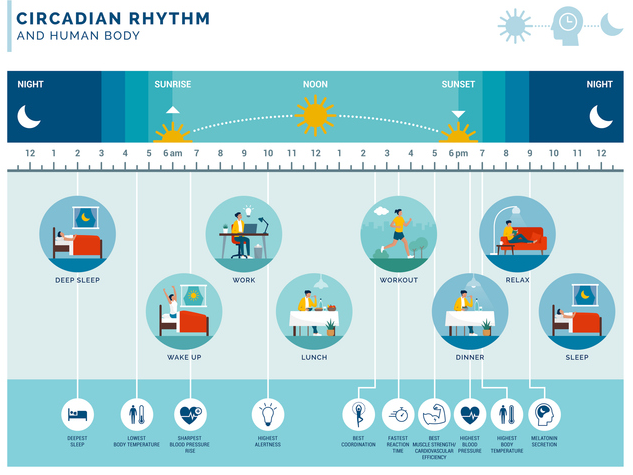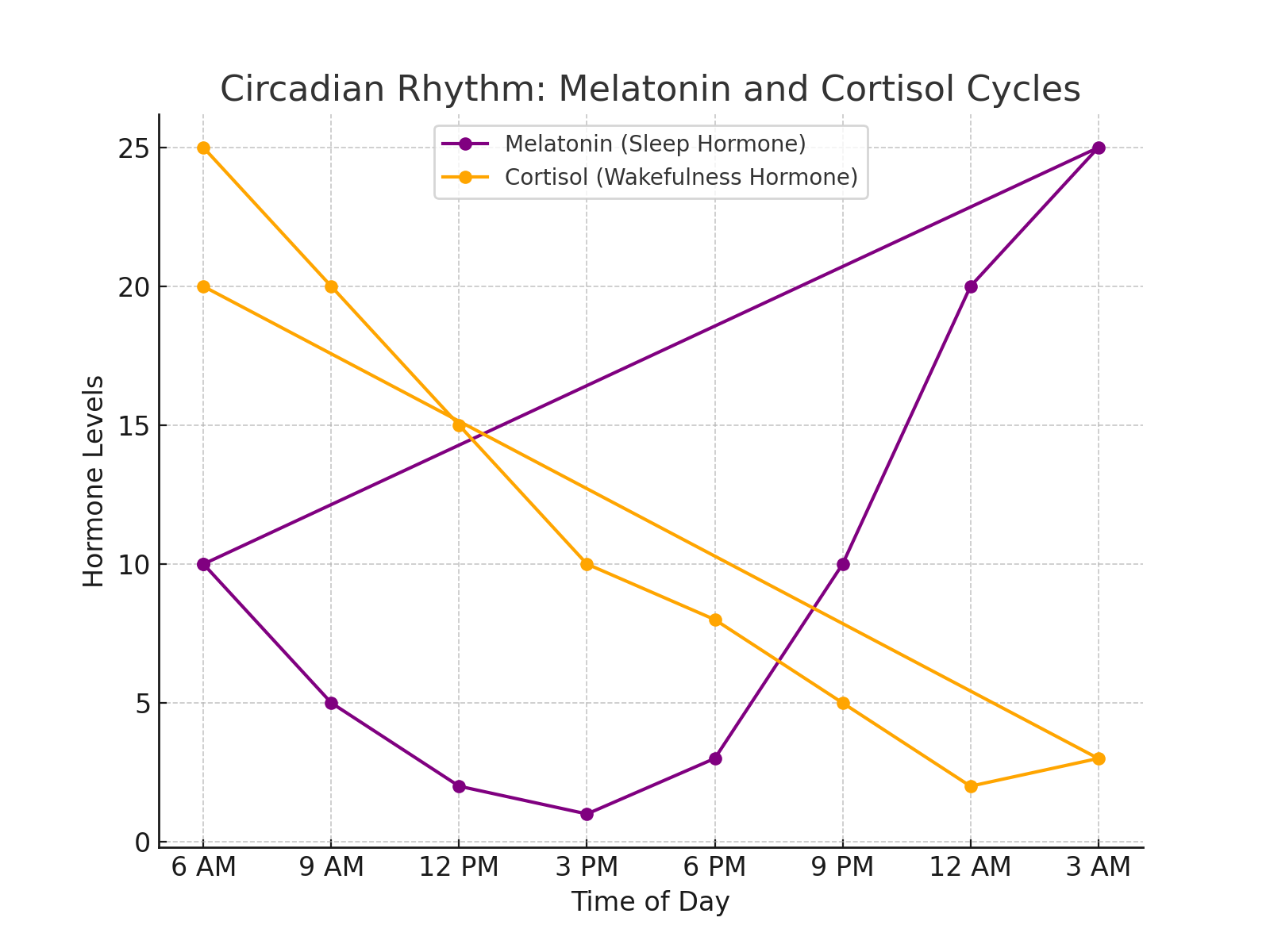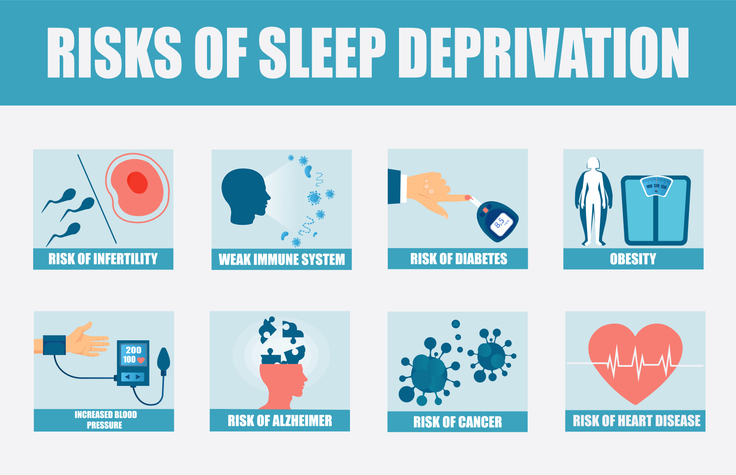
Sleep Isn’t Just Rest—It’s Regulation, Repair, and Rhythm.
The Mysterious World of Sleep
Sleep is a fundamental biological process, as essential to our survival as food and water. Yet, despite spending roughly one-third of our lives asleep, many of us understand surprisingly little about this fascinating state. Sleep isn't simply the absence of wakefulness—it's an active, complex, and highly regulated process that affects virtually every aspect of our physical and mental health.
Sleep is one of those things you just can’t force — no matter how hard you try.
Sleep is not like flipping a switch or making a to-do list and checking it off. Sleep is a biological process, kind of like breathing or digesting food, and it happens when your body is ready, not when you demand it. The more you try to “will” yourself to sleep—thinking, I have to sleep right now!—the more your brain stays alert and awake. Instead of trying to control sleep, it's better to set the stage for it—by relaxing, creating a calm bedtime routine, and letting your body do its thing. Sleep comes naturally when you allow it, not when you chase it. 😌
Sleep unfolds in a predictable pattern each night, cycling through different stages that each serve unique functions in restoring our mind and body.
🔄 The Sleep Cycle
When you drift off to sleep, your brain doesn't simply "power down." Instead, it moves through several distinct stages:
N1 (Light Sleep): The transition phase between wakefulness and sleep. You may feel your muscles twitch (hypnic jerks).
N2 (Deeper Sleep): Body temp drops, heart rate slows, and sleep spindles (brief bursts of brain activity) appear—vital for memory consolidation.
N3 (Deep Sleep): Also called slow-wave sleep. Your body repairs tissue, builds muscle, and restores energy.
REM Sleep (Rapid Eye Movement): Most dreaming occurs here. Brain activity spikes while your body stays still—this stage boosts creativity, memory, and emotional resilience.
A complete sleep cycle takes 90–110 minutes. You go through 4–6 of these per night. Earlier cycles = more deep sleep; later cycles = more REM. Check our sleep calculator to figure out the best time to hit your cycle.
📈 Sleep Drive (Process S): Builds the longer you're awake. It’s why you feel more tired after a sleepless night. When you sleep, this pressure gets released, restoring your energy.

Your sleep drive is influenced by:
1. Adenosine Accumulation
2. Caffeine and Adenosine Receptors
3. Time Awake (Sleep Debt)
4. Quality and Duration of Previous Sleep
⏰ Circadian Rhythm (Process C): Your circadian rhythm is your internal 24-hour clock that regulates when you feel alert or sleepy.

Your circadian rhythm is influenced by:
1.Especially Morning Sunlight
2. Regular Daily Routines
3. Meal Timing
4. Physical Activity
🧩 These two systems work in harmony—like gears in a watch—to ensure you’re alert during the day and ready for rest at night.
Key brain chemicals that influence sleep:
Adenosine: Builds up while you’re awake, promoting sleepiness. Caffeine blocks it.
Melatonin: Signals to your body that it’s time to wind down.
GABA: Helps the brain relax and transition to sleep.
Serotonin, Norepinephrine & Acetylcholine: Regulate REM and other sleep phases.
Check out Sleep-regulating Neurotransmitters and Hormones
Cognitive Processing
Memory Consolidation: Deep and REM sleep help lock in learning.
Learning Enhancement: Sleep preps your brain to absorb new info and recall it better.
Emotional Regulation: REM sleep acts like an emotional filter—processing feelings and reducing reactivity.
Physical Restoration
Cellular Repair: Sleep heals damage from stress, sunlight, and daily wear.
Immune Boost: Sleep is your body’s secret weapon against illness.
Metabolic Balance: Regulates hunger hormones and glucose—supporting healthy weight and energy levels.
Brain Maintenance
Glymphatic System: Like a nighttime housekeeping crew—clears toxins, including beta-amyloid (linked to Alzheimer’s).
Insomnia: Trouble falling or staying asleep.
Sleep Apnea: Interrupted breathing, often paired with snoring.
Narcolepsy: Sudden bouts of sleepiness or sleep attacks.
Restless Legs Syndrome: Urge to move legs, often disrupting sleep.
Parasomnias: Unusual behaviors like sleepwalking or REM behavior disorder.
When you don't get enough quality sleep, it can affect every aspect of your health and wellbeing:

Initial symptoms include:
❌ Fatigue and low energy
❌ Difficulty concentrating
❌ Memory problems
❌ Weakened immune system
Long-term risks may include increased chance of:
❌ Diabetes
❌ Heart problems
❌ Weight gain
❌ Mental health issues
🛠 CBT-I (Cognitive Behavioral Therapy for Insomnia)
The gold standard for chronic insomnia. Includes:
Stimulus control: Bed = sleep only. If you're not sleepy, get up.
Sleep hygiene: Clean up habits and environment that sabotage rest.
Cognitive restructuring: Replace anxious thoughts with helpful ones.
Relaxation techniques: Calm your body and mind before bed.
Morning Light: Sets your body clock.
Evening Blue Light Reduction: Avoid screens before bed.
Chronotherapy
Gradually shift your sleep time to better match your body’s rhythm.
Sleep isn’t optional—it’s essential. It’s where your brain and body rejuvenate, where learning locks in, and emotions get sorted. Mastering the science of sleep means giving yourself permission to heal, grow, and thrive every single night.
✨ Sleep well. Live well. ✨